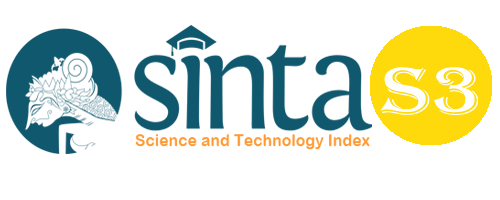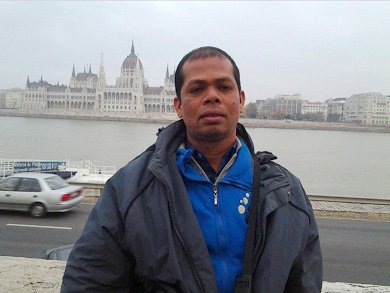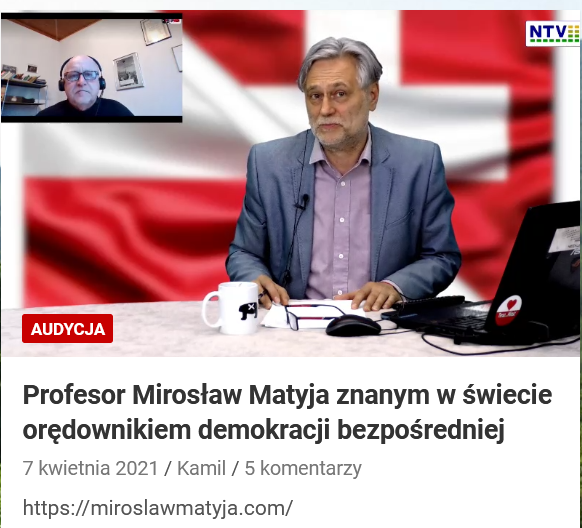Influence of Social Capital on the Development of Agricultural Areas on Highland Peatlands in Humbang Hasundutan Regency
Abstract
The objectives of this study are (1) There are several social capitals owned by farmer groups in supporting the development of highland peatland agricultural areas in Dolok Sanggul District. (2) Measuring the level of social capital of farmer groups on highland peatlands in Dolok Sanggul District. (3) Analyzing the relationship between social capital and the development of agricultural areas in the Upland Peatlands in Dolok Sanggul District. The research method used is the interpretation of the logistic regression model to explain the functional relationship between the dependent variable and the independent variable and to define the unit of change in the dependent variable caused by the independent variable. The results of the research obtained that social capital for farmers who manage agricultural land in Dolok Sanggul District includes two interrelated categories, namely the structural category which includes social relations and solidarity, and the cognitive category which includes health, norms, trust and cooperation. Overall the average level of social capital of farmers in the peatlands of Dolok Sanggul District is 70.45% or moderate (>50-75%), where the level of social capital for social relations (75.9%), solidarity (76.1% ), and cooperation (76.5%) included in the high level of social capital (75-100%), while the level of social capital for health (74.3%), norms (64.2%) and trust (55.7%) ) is included in the moderate level of social capital (50-75%). The results of the analysis show that the relationship variable has a significant effect on increasing farmers' income on peatlands in Dolok Sanggul District. Likewise with social relations, the better the social relations between farmers, the higher the opportunity to increase farmers' income.
Keywords
Full Text:
PDFReferences
Agus, F. and I.G.M Subiksa. 2008. Peatlands: Potential for Agriculture and Environmental Aspects. Soil Research Institute and World Agroforestry Center (ICRAF), Bogor. Indonesia.
Agus, F., Gunarso, P. And Wahyunto. 2014. Dynamics of Peatland Use. In: Indonesian Peatlands. Formation, Characteristics, and Potential to Support Food Security. IAARD Press. 2014.
Andriesse, J.P. 1994. Constraints and Opportunities for alternative use option of tropical peat land. In B.Y. Aminuddin (Ed). Tropical Peats; Proceedings of the International Symposium on Tropical Peatland. 6-10 May 1991, Kuching. Sarawak, Malaysia.
Azvi, T. S, Manshor, M., and S. M. Rezaul Karim. 2011. Vegetation Composition and Diversity of Highland Peats in Toba Plateau, North Sumatra, Indonesia. Scientific Research and Essays Vol. 6 (14), pp. 2895-2903
Bappeda Kab. Humbang Hasundutan. 2009. Regional Spatial Plan for Humbang Hasundutan Regency and Detailed Spatial Planning for Dolok Sanggul City.
Bogor Agricultural University Team, 1974. Soil Productivity Survey Report and Agricultural Development in the Palangkaraya Region, Central Kalimantan. Bogor.
BPS Kab. Humbang Hasundutan. 2014. The Humbang Hasundutan in Figures 2014.
BPS Kab. Humbang Hasundutan. 2017. The Correspondence of Insults in Figures 2017
Coleman, James S. "Social capital in the creation of human capital." American journal of sociology (1988): S95-S120.
Dariah, A., E. Maftu'ah., and Maswar. 2014. Characteristics of Peatlands. In: Guidelines for the Sustainable Management of Degraded Peatlands. IAARD Press.
Driessen, P.M. and H. Suhardjo. 1976. On the defective grain formation of padi rice on peat. Soil Res. Inst. Bulls. 3: 20 – 44. Bogor.
Driessen, P.M. and Soepraptohardjo 1974.Organic soil.In: Soil for Agricultural expansion in Indonesia. ATA 106 Bulletin. Soil Research Institute Bogor.
Eva Cox. 1998. Social Capital and Economics Development: Toward a Theoritical Synthesis and Policy Frmaework. Theory and Society, Vol 27, 151-208.
Fukuyama, Francis (1995), Trust: The social virtues and the creation of prosperity. New York: the Free Press
Halim, A. 1987. Effect of Mixing Mineral and Alkaline Soil with Peat Soil in Central Kalimantan in Soybean Cultivation. Dissertation Faculty of Postgraduate, IPB. Bogor. 322 pp.
Hartatik, W, I G. M. Subisa, and Ai Dariah. 2011. Chemical and physical properties of peatlands. page. 45-56. In Neneng L. Nurida, A. Mulyani, and F. Agus (Eds.). Sustainable Management of Peatlands. Soil Research Institute. Bogor.
Hasbullah J. 2006. Social Capital (Towards Excellence in Indonesian Human Culture). Jakarta (ID):Mr-United Press.
Hosmer D.W. and S. Lemeshow. 2000. Applied Logistics Regression. Second Edition. John Wiley and Sons. Inc. 375 p.
Irawan, and E. Maftu'ah. 2013. Farming Business Model on Peatlands. Guide to Sustainable Management of Degraded Peatlands. http://balittanah.litbang.pertanian.go.id/ind/documentation/juknis/panduanpeat degraded/irawan_usahatani.pdf. Access Date October 29, 2015.
Kusumastuti, A. (2015). Social Capital and Adaptation Mechanisms of Rural Communities in Infrastructure Management and Development Social Capital and Adaptation Mechanisms of Rural Communities in. Journal of Sociology, 20(1), 81–97.
Kyoma, K, and M. Mitsuchi. 1985. Wet Andisols. In Wetland Soils: Characterization, classification, and utilization. proc. of workshop held on 26 March to 5 April 1984 under the joint sponsorship of International Rice Research Institute, Soil Management Support Service Agency for International Development and United States Department of Agriculture. Bureau of Soils Philippines Ministry of Agriculture. IRRI, Los Banos, Laguna, thr Philippines.
Leiwakabessy, F. M. 1978. Nature of available land in transmigration areas. Seminar on Consolidating Development Efforts in Transmigration Areas by JTKI-PPSM.
Lenggono PS. 2004. Social Capital in Peat Management (Case Study on Peat Peat Community in Muara Pantuan Village In Anggana District, Kutai Kertanegara Regency) [thesis]. Bogor (ID): IPB.
Maftu'ah, E., M. Noor., W. Hartatik., and D. Nursyamsyi. 2014. Management and Productivity of Peatlands for Various Crop Commodities. In: Indonesian Peatlands. Formation, Characteristics, and Potential to Support Food Security. IAARD Press. 2014.
Martinelli, I., et al. (2019). Community Economic Development Prospect Based on Wakaf Funds. Budapest International Research and Critics Institute-Journal (BIRCI-Journal), 409-423.
Masganti. 2013. Innovative technology for sub-optimal land management of peat and acid sulfate to increase food crop production. Agricultural Innovation Development 6(4):187-197.
Mulyani, A., S. Ritung, and Sukarman. 2014. Distribution and Allocation of Utilization of Degraded Peatlands in Relation to the RTRW of the Provinces: Riau, Jambi, Central Kalimantan and West Kalimantan. BBSDLP. Unpub.
Nasution A. 2015. The Role of Social Capital in Reducing Rural Household Poverty in Indonesia [thesis]. Bogor (ID):IPB.
Nasution Z, and Mansor M (2004). The Effect of Mining on Highland Peats of Toba Plateau North Sumatra. In: Tropical Peatswamps, SafeGuarding a Global Natural Resource. (Mashhor, M., Ahyaudin, A., J. Rieley, A. H. Ahmad and A. Mansor eds), Published by Universiti Sains Malaysia, pp. 220-227.
Noor, M., Masganti., and F. Agus. 2014. Formation and Characteristics of Indonesian Tropical Peat. In: Indonesian Peatlands. Formation, Characteristics, and Potential to Support Food Security. IAARD Press. 2014.
Parish, F., Sirin, A., Charman, D., Joosten, H., Minayeva, T., and Silvius, M. (Eds.). 2007. Global Environment Centre, Kuala Lumpur and Wet Land International, Wageningen.
Portes, Alejandro. 2000. The Two Meanings of Social Capital, Sociological Forum, Vol. 15, No. 1.
Radjagukguk, B. 1997. Peat soil of Indonesia: Location, classification, and problems for sustainability.pp. 45-54. InJ.O. Rieley and S.E. Page (Eds.).Biodiversity and Sustainability of Tropical Peat and Peatland. Proceedings of the International Symposium on Biodiversity, Environmental Importance and Sustainability of Tropical Peat and Peatlands, Palangkaraya, Central Kalimantan 4-8 September 1999. Samara Publishing Ltd. Cardigans. UK.
Ritung, S., Wahyunto, K. Nugroho, Sukarman, Hikmatullah, Suparto, and C. Tafakresnanto. 2011. Indonesian Peatland Map at 1:250,000 Scale (Indonesian peatland map at the scale 1:250,000). Center for Research and Development of Agricultural Land Resources, Bogor. Indonesia.
Sabiham, S. 2006. Management of Indonesian Peatlands Based on Unique Ecosystems. IPB. Bogor.
Salampak, 1999. Increasing the Productivity of Peat Soil in Rice Fields by Providing Ameliorant Materials for Mineral Soil with High Iron Content. Postgraduate Dissertation Program, Bogor Agricultural University.
Schmidt, F.H. and J.H.A. Ferguson. 1951. Rainfall Types Based on Wet and Dry Period Ratios for Indonesia, With Western New Guinea. Ministry of Transportation, Department of Meteorology and Geophysics. Vert. No. 42.
Sihite, L. W., P. Marbun., and Mukhlis. Classification of Topogenous Peatlands Converted to Rice Fields and Converted to Arabica Coffee and Horticulture.
Stevenson, F.J. 1994. Humus Chemistry. Genesis, Composition, and Reactions. John Wiley and Sons. Inc. New York. 443 p.
Subagyo, H. 2006. Tidal Swamp Land. PP 23-98. In. Swamp Land Characteristics and Management. (Eds.). Didi Ardi S., Invite Kurnia, Mamat H.S., Wiwik Hartatik, and Diah Setyorini. Bogor. Center for Research and Development of Agricultural Land Resources.
Suhardjo, H. and I P.G. Widjaja-Adhi. 1976. Chemical characteristics of the upper 30 cms of peat soils from Riau. ATA 106. Bull. 3: 74-92. Soil Res. Inst. Bogor.
Suharta, N. And B.H. Prasetyo. 2009. Mineralogical and chemical characteristics of spodosols in Toba Highland, North Sumatra. Indonesia. J. Agric. science. 10(2): 54-64.
Syahyuti (2008) The role of social capital in agricultural trade. Agro-Economic Research Forum 26(1):32–43.
Velicia, et al. (2021). The Effect of Company Size, Profitability, Liquidity and Sales Stability on the Capital Structure of the Food and Beverage Subsectors Manufacturing Companies Listed on the Indonesia Stock Exchange in 2014-2019. Budapest International Research and Critics Institute-Journal (BIRCI-Journal). P. 421-431.
DOI: https://doi.org/10.33258/birci.v4i4.3526
Article Metrics
Abstract view : 55 timesPDF - 26 times
Refbacks
- There are currently no refbacks.

This work is licensed under a Creative Commons Attribution-ShareAlike 4.0 International License.

This work is licensed under a Creative Commons Attribution-ShareAlike 4.0 International License.

_.gif)

















_.gif)



